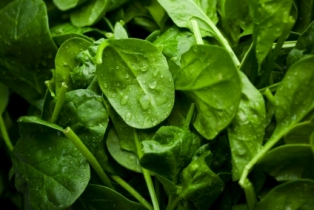- Home
- Blog
- Healthy Eating for Wellness
- Easy ways to eat more vegetables and fruit
Easy ways to eat more vegetables and fruit
Written by Catherine Saxelby
on Saturday, 26 September 2009.
Tagged: healthy cooking, healthy eating, healthy lifestyle, vegetables

Eating plenty of vegetables and fruit makes good nutrition sense. They are packed with vitamins, minerals, fibre and numerous antioxidants - all for very few kilojoules (Calories). Nutrition guidelines encourage us all to eat at least seven serves of vegetables and fruit a day. You'll often hear it called "seven-a-day" which simply means the number you aim for.
Seven serves a day
So what exactly does seven-a-day mean? Your goal is to eat five serves of vegetables or salad each day plus two serves of fruit giving a total of seven!
5 + 2 = 7
What's a serve?
It's all well and good to say "seven serves a day" but what do nutritionists mean by a "serve"?
One serve of fruit is:
- 1 medium sized piece (apple, mandarin, pear)
- 2 small pieces (apricot, plum, kiwi fruit)
- 1 cup diced fresh fruit or fruit salad
- 1 cup canned fruit pieces, drained
- ½ cup (125 mL) fruit juice
One serve of vegetables is:
- ½ cup diced cooked vegetable (around 75 g or 2 1/2 oz)
- 1 cup salad leaves or raw sliced vegetables
- 1 medium potato
- ½ medium kumera or sweet potato
6 easy ideas to help kids reach seven-a-day
1. Pack raw vegetable sticks (carrot, celery, sugar-snap peas, grape/cherry tomatoes) into the kids' lunch boxes.
2. Warm and fill hungry tummies with a mug of vegetable soup or a hot corn on the cob when they come home from school in the afternoon when it's cold.
3. Grate vegetables into bolognaise sauce, rissoles, hamburger patties and stews to "outsmart" reluctant vegetable eaters.
4. If your kids won't eat fresh fruit at school, offer a plate of sliced apple, pear or rockmelon when they come home or after dinner.
5. Use leftover vegetables for bubble and squeak - kids love it. A great alternative to mash.
6. Bake fruit such as apples, pears, bananas or nectarines for dessert.
7. As a fun incentive, start a star chart for your kids on the fridge.
6 healthy choices for busy adults
1. Team your Sunday morning eggs with steamed spinach, slow-roasted tomatoes or grilled mushrooms. Or make an omelette with vegetable filling such as corn kernels, thinly-sliced zucchini or capsicum.
2. Slice a small banana with a sprinkle of cinnamon on top of your breakfast porridge.
3. For dinner, serve up large portions of non-starchy vegetables such as broccoli, carrots, asparagus, mushrooms and Brussels sprouts.
4. Enjoy a colourful stir-fry - the more colourful vegies you use, the more antioxidants you get.
5. Add extra salad to your sandwiches. Go for variety like lettuce, tomato, grated carrot, sliced cucumber, sprouts, rocket or beetroot.
6. Enjoy a mug of home-made vegetable soup with lunch instead of coffee.
7. Make up vegetable sticks (instead of corn chips or crackers) to dip into hommus or salsa with drinks.
Try some recipes today
For more ideas check out the Foodwatch healthy recipes section. Some suggestions:
- Roasted Italian vegetables
- Salad of roasted vegetables and chick peas
- Vietnamese salad
- Persian oranges with wine and cloves
Research gives you more reasons to eat vegetables
Green vegetables cut diabetes risk
 Eating plenty of green leafy vegetables can reduce your risk of type 2 diabetes by 14 percent, say UK researchers in an article published in the British Medical Journal.
Eating plenty of green leafy vegetables can reduce your risk of type 2 diabetes by 14 percent, say UK researchers in an article published in the British Medical Journal.
Foodwatch
The Good Stuff
The Boring Stuff
© 2025 Foodwatch Australia. All rights reserved
Website by Joomstore eCommerce





